Recently, Stoewer typewriters caught my eye. I have had two in my collection for some time, first a Stoewer Elite, then a Stoewer model 4. These do look special, the number 4 for its elegant shape and beautiful decoration resembling Art Nouveau; the Elite for its extravagantly placed ribbon spools.
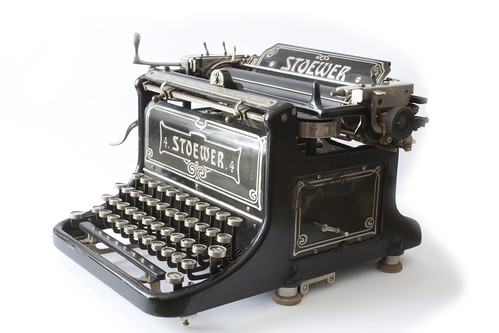 |
| Stoewer 4, ca. 1908 |
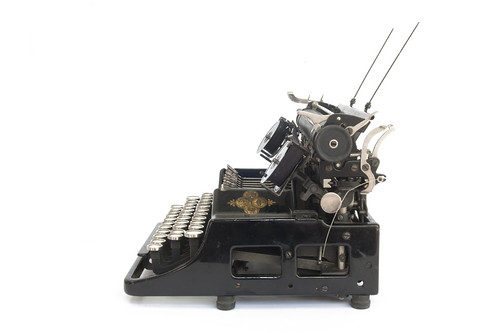 |
| Stoewer Elite, ca. 1913 |
Then I discovered the Stoewer portable, which was placed on the market in 1926.
Apparently only 7800 of these nice 4-bank portables were made. I had spotted them occasionally on ebay, and got lucky a couple of weeks ago. When it arrived by mail, I discovered it was not in good shape at all: dirty, feet missing, no pulling cord for the carriage. I could replace the feet with perfectly fitting items sold as door stoppers at a local warehouse. The cleaning was quickly done - at this occasion I discovered the carriage could be taken off very easily by opening two latches on the back of the typewriter. Replacing the drawing cord was a bit of an exercise, fiddling around to find the good length for the string (I used a very thin metal string used in ship model making) and the right tension for the spring. Et voilà:
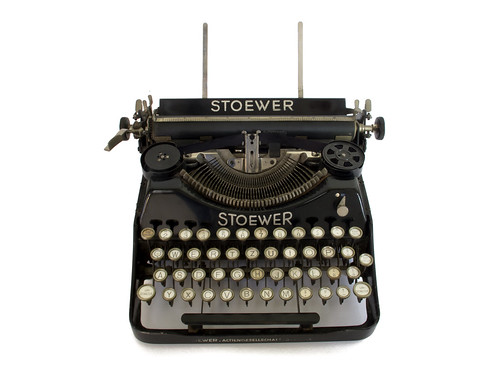 |
| Stoewer portable typewriter n° 124002 |
 |
| door stoppers as new feet. notice also the latch on the outer corner, easy release for the carriage |
Now, the fate of the Stoewer factory was somewhat unfortunate. As of 1926, the Bernhard Stoewer A.G. met with economic difficulties. Although the typewriter production was doing well, with high demand especially for the Kleinschreibmaschine - the portable -, sales of sewing machines and bicycles sharply declined, so that the overall economic situation of the entreprise was gloomy. A rescue attempt in 1929 did not yield success, and in August 1930 production came to a halt, followed by the liquidation of the company in 1931.
This was unfortunate, as by this time, Stoewer had developed a successor model of the Stoewer Portable, which was essentially ready for production. This improved model was designed by the prolific Viennese engineer Leopold Ferdinand Pascher (1896 - ca. 1945).
At this point, Rheinmetall, a German guns and artillery producer who had started producing typewriters in an attempt to diversify production after World War I, bought the new typewriter and equipment. It was placed in production as Rheinmetall portable in 1931.
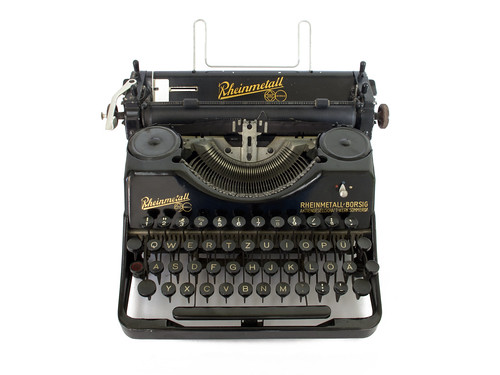 |
| Rheinmetall portable, n° 258439 |
The two models are quite similar, already from the outside. Notice the ribbon selector button, the overall shape, and the equally detachable carriage.
This is it (for today).






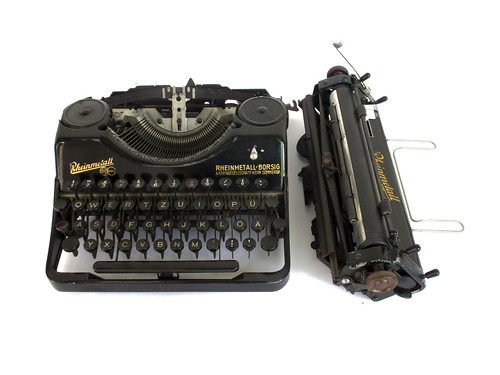

Great post, Georg! Very nice overview of the Stoewer company and its machines; pity they went out of business. It's a bit freaky to see those "decapitated" typewriters, though! Poor things...
ResponderBorrarDoorstoppers as new feet? Genius! I've always wondered what the Swiss equivalent is of the tap washers/ grippers everyone seems to be using - it is kind of you to show the picture so I know what to look for in Migros!
Thank you Adwoa! Credits actually go to Alfred for finding the door stoppers. The only thing I needed to find was fitting screws - I could collect those from a jar full of small typewriter parts I had in stock. If not, they can be found easily in a hardware shop.
ResponderBorrarI am still searching for a thick rubber hose or similar block of rubber to fabricate feet for the big machines. Matter of fact they are available on the internet, but rather expensive.
wow those are impressive!
ResponderBorrarI always thought the Stoewer typewriters were eye-catching. I don't yet have a big Stoewer (the design, I believe, should be called Art Nouveau or Jugendstil rather than Art Deco). I do have 3- and 4-bank portables, plus several Rheinmetall successors. The 4-bank design was good and lasted for something like 30 years with various improvements made by Rheinmetall.
ResponderBorrar